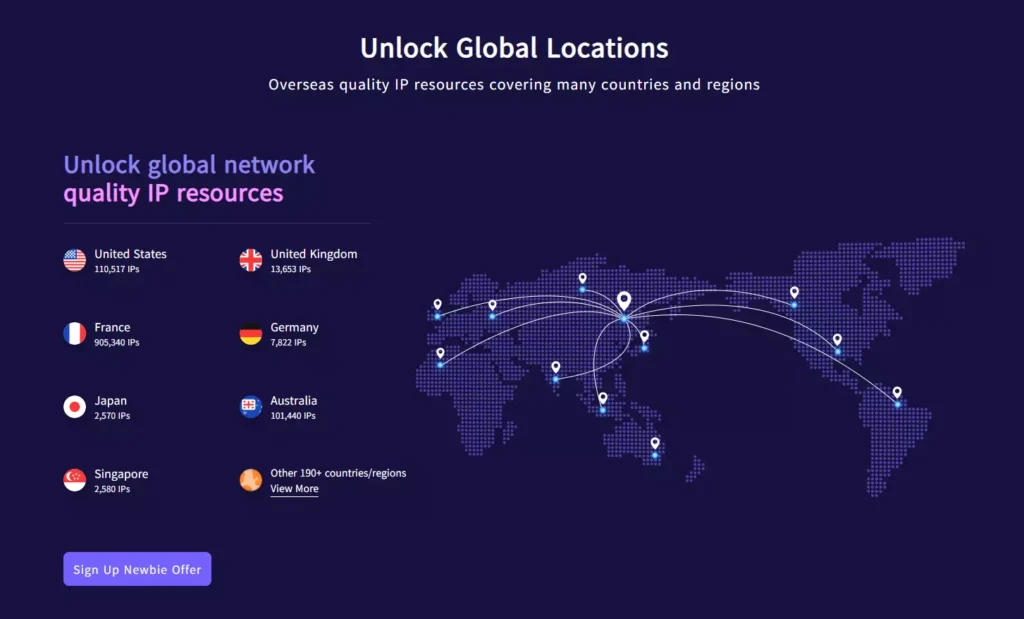In the data-driven world of marketing, finance, and research, Google Trends is an invaluable resource. It offers a direct look into the collective interest of the public, revealing rising trends, seasonal patterns, and shifting consumer behavior. While the web interface is excellent for manual analysis, its true power is unlocked when you can access this data at scale. This is where a Google Trends scraper comes in.
Developers and data analysts often build scrapers to programmatically download trend data for thousands of keywords, allowing for complex analysis and predictive modeling. However, anyone who has tried this quickly runs into a significant roadblock: Google’s powerful anti-scraping measures. This article explains the primary challenge of scraping Google Trends and details the essential solution for building a reliable tool.

The Problem: The ‘429 (Too Many Requests)’ Error
Google does not offer an official public API for high-volume trend data. Therefore, scrapers typically work by using libraries (like Python’s pytrends) that replicate the requests made by a regular web browser. While this works for a few queries, Google’s servers are designed to detect and block automated activity.
If a single IP address sends too many requests in a short period, Google will respond with an HTTP 429 error code, effectively blocking that IP from accessing the service for a cooldown period. For anyone trying to scrape data for hundreds or thousands of keywords, this rate limit makes the task impossible from a single machine or server. It’s a common challenge where a scraper works for a few minutes and then suddenly starts failing, a direct result of IP-based blocking.
The Solution: A Robust Proxy Network
The only effective way to overcome Google’s rate limiting is to distribute your requests across a large number of different IP addresses. By using a proxy server, your scraper’s traffic is routed through an intermediary machine, making the request appear to come from that proxy’s IP address, not your own.
To build a reliable Google Trends scraper, you need a rotating proxy service. This type of service automatically changes the IP address for each request (or after a set number of requests). As a result, Google never sees an excessive number of queries from any single IP, allowing your scraper to run continuously without being blocked. The key is to make your automated traffic look like it’s coming from many different, real users.
For scraping a sophisticated service like Google, the quality of proxies is critical. Standard datacenter proxies are often easily detected. Residential proxies, which use IP addresses from real Internet Service Providers (ISPs), are the industry standard for this task as they are virtually indistinguishable from genuine user traffic.

How IPFLY Enables Reliable Google Trends Scraping
Building a successful scraper isn’t just about the code; it’s about the quality of the infrastructure supporting it. A professional proxy provider like IPFLY offers the specific tools needed to overcome the challenges of scraping Google Trends.
Here’s how IPFLY’s features directly address the problem:
Rotating Residential Proxies:
IPFLY offers a massive pool of 90+ million rotating residential IPs from genuine devices across the globe . This is the ideal tool for a Google Trends scraper. The ability to “refresh IPs per request” ensures that each query is sent from a unique IP, effectively bypassing rate limits .
High Anonymity and Success Rates:
By sourcing IPs from real end-user devices, IPFLY provides the high anonymity needed to avoid detection . The service leverages proprietary algorithms and filtering to ensure “ultra-high success rates and security for every proxy connection,” which is crucial for long-running data collection jobs .
Built for Anti-Scraping Mechanisms:
IPFLY is explicitly designed to help developers “bypass geo-restrictions and anti-scraping mechanisms, enabling efficient data testing/collection across regions” . This core functionality is exactly what is required to build a scraper that won’t fail.
Unlimited Concurrency:
For large-scale projects, you need to run many requests in parallel. IPFLY’s platform supports “unlimited concurrency for high-frequency IP changes,” allowing you to scale your data collection efforts without performance bottlenecks.
In essence, while the scraping code defines the “what,” a service like IPFLY provides the “how,” delivering the reliable, rotating IP infrastructure needed to access the data without interruption.

Build Your Data Projects on a Solid Foundation
Don’t let IP blocks and rate limits derail your data analysis projects. Whether you’re scraping Google Trends, conducting market research, or performing SEO analysis, a powerful proxy network is essential for success.
New User Offer: Experience the stability of a premium proxy service. Get started with IPFLY today and receive a free trial plus exclusive discounts!
[Visit IPFLY.net to Learn More](https://www.ipfly.net)


